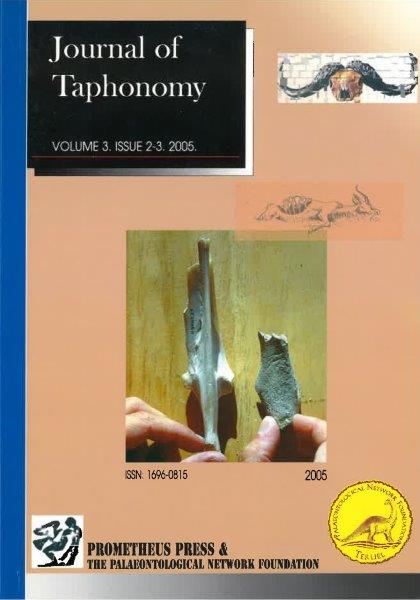Application of Return Rates to Large Mammal Butchery and Transport among Hunter-gatherers and its Implications for Plio-Pleistocene Hominid Carcass.
Foraging and Site Use.
Charles P. Egeland, Ryan M. Byerly.
Keywords: RETURN RATES, CARCASS TRANSPORT, SKELETAL ELEMENT ABUNDANCE, BONE SURFACE MODIFICATIONS, HUNTER-GATHERERS, PLIO-PLEISTOCENE HOMINIDS
The butchery and bone transport behavior of Plio-Pleistocene hominids has sparked much debate among paleoanthropologists because of the implications these behaviors have for hominid site use and socio-ecology. Contemporary hunter-gatherers provide useful test cases for zooarchaeologists interested in modeling these behaviors prehistorically. Among the set of available utility indices meant to aid in predictions of carcass resource use, return rates may be the most useful, as they estimate the net gain associated with nutrient extraction. This study presents experimentally-derived post encounter return rates associated with the butchery of meat-bearing appendicular skeletal elements from Size Class 2, 3 and 4 ungulates. Combining these new data with published data on marrow extraction allows composite return rates to be calculated. This study applies these data to ethnoarchaeological reports of bone transport among Hadza (Tanzania) and Kua (Botswana) hunter-gatherers. Results indicate that return rate does not systematically correlate with appendicular bone transport among contemporary foragers, suggesting: (1) the difference between zooarchaeologically-meaningful (i.e. individual skeletal elements and element portions) and behaviorally-meaningful (i.e. articulated limb segments) units of analysis exaggerate the differential transport potentials of these skeletal elements and (2) maximizing caloric gain per unit time at the site of carcass acquisition may not be a primary goal. Return rates also do not significantly correlate with skeletal part abundances from a number of important Plio-Pleistocene sites. This in turn suggests that current return rate data are probably not comprehensive enough to adequately account for the many variables influencing transport decisions. Given these findings, we suggest that return rates may be more productively applied to questions of carcass processing instead of carcass transport. Addressing these questions requires an analytical shift from skeletal part abundances to hominid-inflicted bone damage. We therefore integrate experimental return rates with data on surface modifications from some Plio-Pleistocene assemblages and examine the implications for hominid carcass processing and site use.


